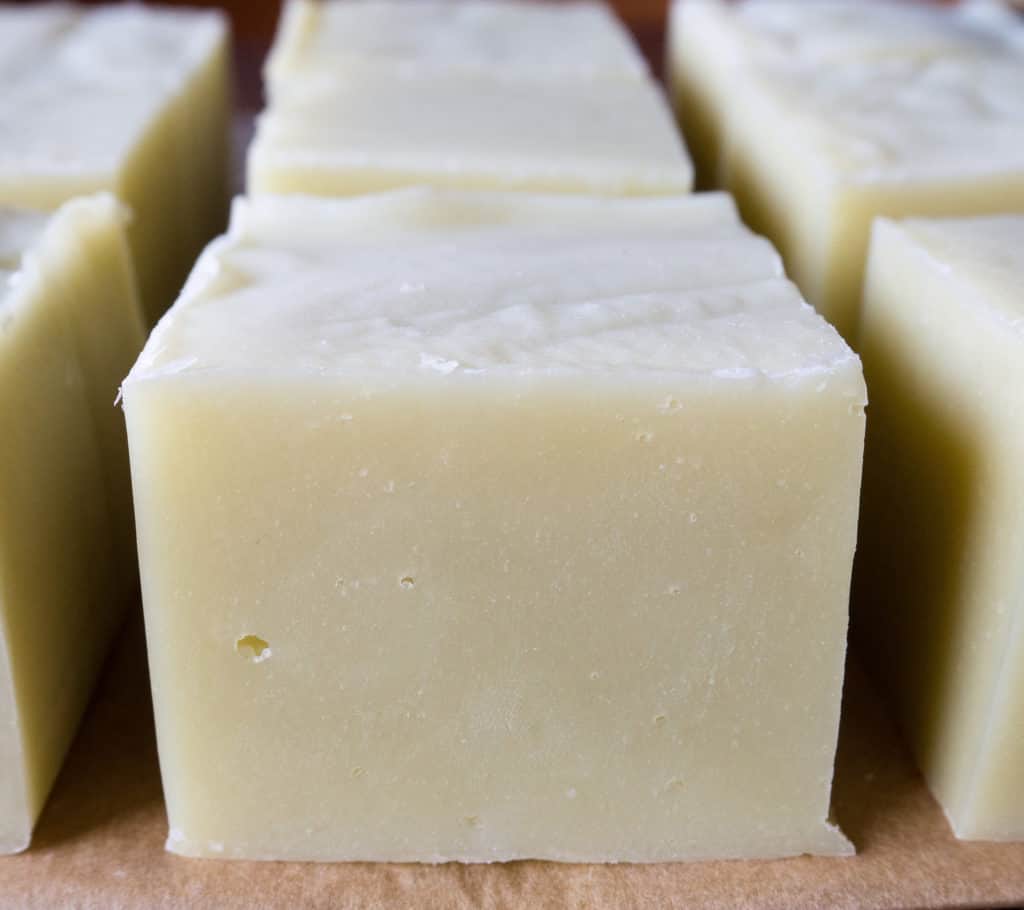
I love to make my own soap – I know exactly what goes in to it, I know exactly how it is made, I save money and I love to make things! What is not to like? Apart from having to be super careful when handling sodium hydroxide it is like following any other recipe. Olive Oil Soap is my go-to soap recipe and I make a few batches a year.
I gave lots of soap as Christmas presents this year. It is popular and I get very kind comments from friends with very sensitive skin who tell me this is the only soap they can use. Praise indeed. I prefer the soap to be unscented but you can add essential oils if you wish.
What is soap? A simple question but not a simple answer. Soap is the result of a chemical reaction of an acid (oils, fats) with a base (sodium hydroxide) to produce soap and glycerin. The reaction is called saponification. The chemical reaction gradually changes the mixture of oils and sodium hydroxide from a separated mixture to a thicker, uniform mixture. Once the soap is added to the mould the chemical reaction continues for a few weeks.
Soap works to clean skin through its role as a ‘surface-active agent’ – it helps make the skin wet – and once it has done this the soap then holds dirt and grease in suspension away from your skin until rinsed away. That is why your bath water is always murky when you use soap. Lovely stuff!